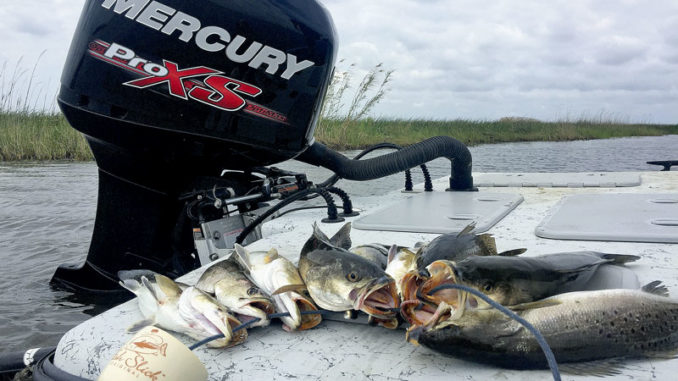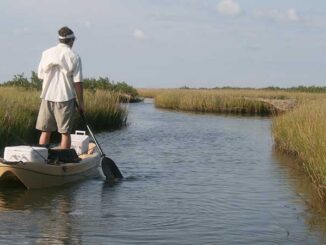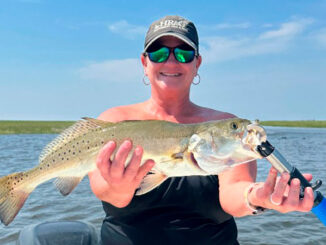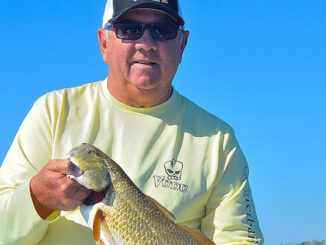
Fishing, the original social distancing activity, has been deemed “essential” by Gov. Greg Abbott of Texas.
If you’re an angler, there was undoubtedly never any question about that. The easiest program to fish this May and working into June — other than school fish — is fishing slicks, but many anglers will drive right past and many times over slicking fish.
With the large numbers of baitfish on which trout and redfish alike are gorging this time of year, slicks are very common and a very productive means of locating fish. The naturally occurring oil in the baitfish that are being eaten produces the slick. If you are unsure what a slick looks like, toss a couple of potato chips in the water and observe the slick that immediately develops. If you go the potato chip route, you’ll probably make some new best friends pretty quickly as boats pull up on the birds that will also show up nearly as quick as the slick.
It is important to note that speckled trout and redfish are not the only fish that produce slicks. Black drum, gar and gafftop may also be found feeding under them. If you hook a gafftop, it is time to start looking for the next slick to fish. Also, be wary to not waste time fishing crab-trap slicks; their location and odor should warn you. A productive slick should have a fresh, sweet odor that is comparable to fresh-cut grass or watermelon.
Baits to use
I am a topwater fishing lunatic, so naturally I will be casting either a Super Spook or a She Dog at slicks. If they’re unwilling to eat on top, I will switch to either a jerkbait or a MirrOdine XL. Pink/gold or pink/silver are hard combinations to beat; clown is also another personal favorite. MirrOlure’s 808 and 21 are also colors that are very productive in the MirrOdine XL. If they aren’t going for hard plastics, I will switch to soft plastics; a Sea Shad in chicken-on-a-chain color rigged on either 1/4- or 1/8-ounce jighead is always a good choice.
Remember, slicks will drift with the wind and current. It is vital to position upwind and upcurrent and cast to where the slick first developed, not where it drifted. Make long casts and fish slowly until you are able to locate the fish. Sometimes, just one or two will be there, and other times, you will find a school under a slick that produces fish for several hours. To increase your chances, fish as quietly as possible; simply shutting a hatch or cooler lid too loud can completely ruin a good bite.
Slicks can literally form anywhere. We fish them in open water, along shorelines and on flats. Areas to key in on are flats off of ship channels and the ICW such as Turner’s on Big Lake or Sydney Island on Sabine. We also commonly fish slicks along rock walls such as the jetties or the north and south revetment walls. Running the Louisiana shoreline south of Johnson’s Bayou to Blue Buck is another prime location.
Capt. Adam Jaynes can be found at justfishsabine.com.


